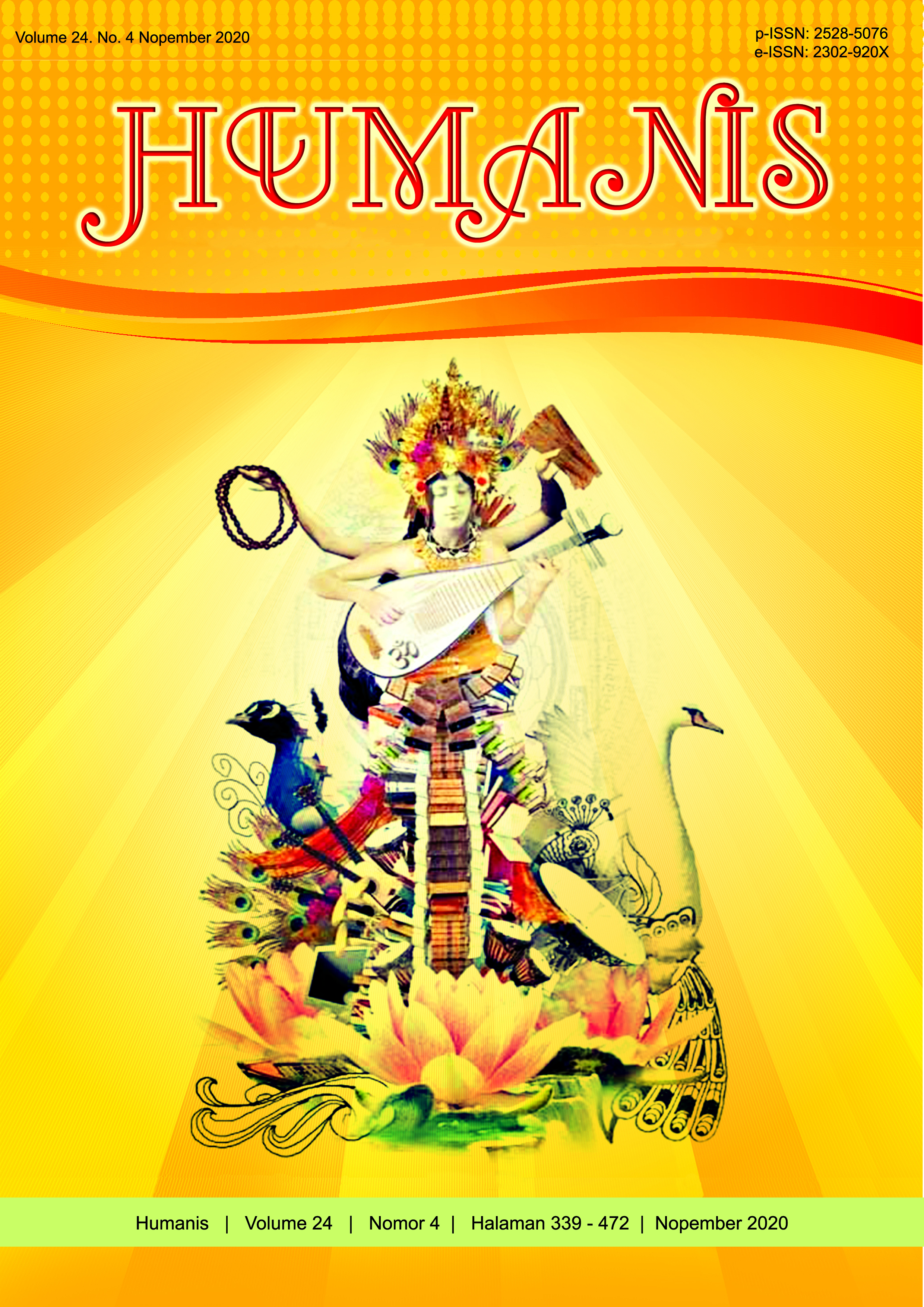The Ideology within Covid-19 Public Service Advertisements: A Semiotic Approach
Abstract
The COVID-19 virus is a new virus linked to the same family of viruses as Severe Acute Respiratory Syndrome (SARS). The virus is transmitted through direct contact with respiratory droplets of an infected person and touching surfaces contaminated with the virus. COVID-19 patients in Indonesia continue to grow. The Indonesian government has made efforts to break the chain of the spread of the COVID-19. One of them is by creating COVID-19 public service advertisements. Public service advertisement plays an important role in this pandemic to spread positivity which can motivate people to survive in this difficult time. This study aims at analyzing the ideology within COVID-19 public service advertisements by analyzing the meaning of verbal and visual signs used in those advertisements. The data were taken from five selected posters of COVID-19 public service advertisements. The data were collected by observation method and analyzed by qualitative method using theory of Semiotic proposed by Barthes (1998) and theory about ideology by Storey (2009). The analysis is presented in informal method. Our finding shows there are various ideologies used in COVID-19 public service advertisements, such as: prevention is better that cure, the ideology of being cooperative, responsible, productive and optimistic in facing COVID-19 pandemic. COVID-19 public service advertisements generally deliver a massage that together we can defeat COVID-19.
Downloads
References
Barthes, R. 2009. Mythologies. London: Vintage.
Barthes, R. 2007. Petualangan Semiologi. Yogyakarta: Pustaka Pelajar.
Beasley, R. & Danesi, M. 2002. Persuasive Signs: The Semiotic of Advertising. Berlin: Moutor de Gruyter. Retrieved from http:// www. books. google.com/ books? id= as1r7kC.
Bignell, J. 2002. Media Semiotics: An Introduction. Manchester: Manchester University Press. p. 31-78. Retrieved from http:// www. books. google.com/ books? id=MGom6ENJRLkI.
Chandler, D. 2007. The Basic Semiotics. New York: Routledge.
Cook, G. 1992. The Discourse of Advertising. London: Routledge.
Danesi, M. 2010. Pengantar Memahami Semiotika Media. Yogyakarta: Jalasutra.
Danesi, M. 2010. Pesan, Tanda, dan Makna. Yogyakarta: Jalasutra.
Danesi, M. dan Perron, P. 1999. Analyzing Culture. An Introduction and Handbook. Bloomington dan Indianapolis: Indiana University Press.
Davis, H. dan Paul Walton. 2010. Bahasa, Citra, Media. Yogyakarta: Jalasutra.
Durant, A. & Lambrou, M. 2009. Language and Media. 93. London: Routledge.
Dyer, G. 1986. Advertising as Communication. London: Routledge.
Eagleton, T. 1991. Ideology: An Introduction.p.195. Retrieved from http:// www.books.google.com/books?id= JK2L8zoHFeIL.
Fiske, J. 1990. Introduction to Communication Studies (2nd Edition). London: Routledge.
Goddard, A. 2002. The Language of Advertising. London: Routledge.
Hodge, R. & Kress, G. 1993. Language as Ideology. London: Routledge.
Kress, G & van Leeuwen, T. 2009. Reading Images, the Grammar of Visual Design. London: Routledge.
Kress, G. 2010. Multimodality: A Social Semiotic Approach to Contemporary Communication. London: Routlege.
Saren, M. & Maclaran, P. & Goulding, C. & Elliott, R. & Shankar, A. and Catterall, M. 2007. Critical Marketing. Defining the Field. Oxford: Elsevier.
Storey, John. 2009. Cultural Theory and Popular Culture: An Introduction (5th Edition). London: Pearson.
Van Leeuwen, T. 2005. Introducing Social Semiotics. London: Routledge.
Wierzbicka, A. 1996. Semantics Primes and Universals. New York: Oxford University Press.


















